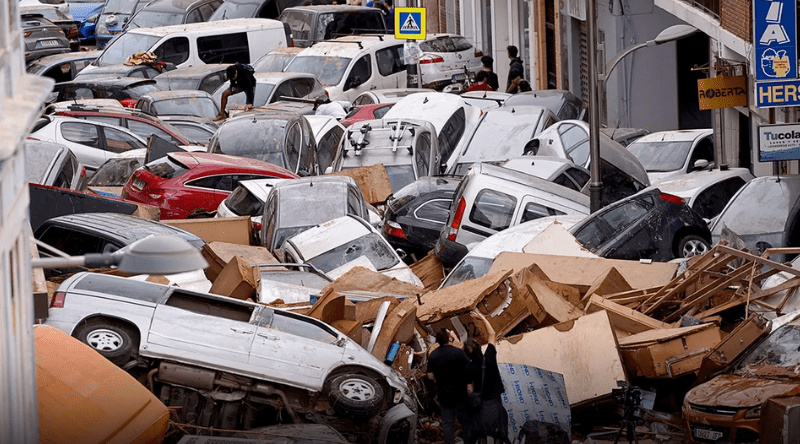The death toll of the severe flash floods that hit Southern Spain on Tuesday reached at least 205 people, 202 of them were in Valencia, according to media reports.
Many streets are still blocked by debris and cars, leaving some residents trapped at home. Some areas remain without power, clean water, or reliable phone service.
In the Valencian community of Chiva, residents worked to clear mud and debris from streets that saw more rain on Tuesday than in the past 20 months combined. The flooding tore through roads and houses. “Entire houses have disappeared, and we don’t know if people were inside,” the town’s Mayor, Amparo Fort Sánchez said.
Rescue teams, soldiers, and police are still searching for people who may still be trapped in wrecked cars or flooded garages.
Satellite images reveal the scale of the disaster, showing Valencia submerged in thick, muddy water, including a major highway, V-33, which is now buried under mud.
Residents are still working to clear mud as some services begin to be restored. About 85% of the 155,000 customers affected by power outages now have electricity back. But in areas like Alfafar, one of the hardest-hit towns in the South East, many remain desperate for help.
Mayor of Alfafar, Juan Ramón Adsuara, said the aid is not nearly enough, leaving many residents in extreme hardship. “There are people who’ve lost everything,” he said.
Floodwater turned streets into death traps, washing through homes and businesses, and making many uninhabitable. Some shops have been looted with the local police arresting 50 people.
People are using social media to share photos of missing loved ones and to organize support networks like “Support Mutu,” which connects people in need with those who can provide it. Local groups are also gathering supplies and raising funds across Spain.
Flash floods are common on Spain’s Mediterranean coast during the fall season, but this storm was one of the strongest in recent memory, likely worsened by climate change. Rising temperatures, frequent droughts, and a warming Mediterranean Sea have all contributed to more extreme weather in Spain.
A study by “World Weather Attribution” suggests climate change has doubled the likelihood of a storm like this week’s flooding in Valencia.
Spain’s recent two-year drought worsened the flooding, as dry ground could not absorb the heavy rain. This flood is Spain’s deadliest since 1996 when 87 people died after a flood swept through a campsite in Biescas in the North East.


